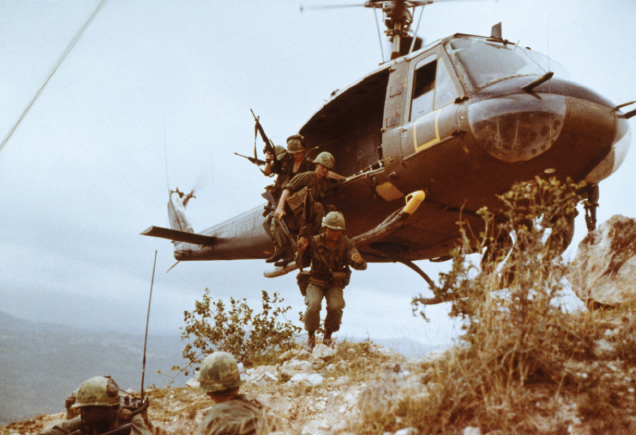Why did Johnson Escalate American Involvement in Vietnam?
Printed Page 876

U.S. Military Helicopter
The particular conditions in Vietnam — the guerrilla tactics of the enemy, the conduct of fighting all over South Vietnam, and the mountains and dense jungles with limited landing areas — put a premium on helicopters’ mobility and maneuverability. In addition to transporting troops and artillery, performing reconnaissance, picking up downed pilots, and evacuating the dead and wounded, helicopters mounted with machine guns and grenade launchers also served as attack vehicles. © Bettmann/Corbis.
LYNDON B. JOHNSON SHARED the Cold War assumptions that had shaped Kennedy’s foreign policy. Retaining Kennedy’s key advisers — Secretary of State Dean Rusk, Secretary of Defense Robert McNamara, and National Security Adviser McGeorge Bundy — Johnson continued the massive buildup of nuclear weapons as well as conventional and counterinsurgency forces. In 1965, he made the fateful decisions to order U.S. troops into combat in Vietnam and to initiate sustained bombing of the North. That same year, Johnson sent U.S. Marines to the Dominican Republic to crush a leftist rebellion.
CHRONOLOGY
1964
- – Gulf of Tonkin Resolution.
1965
- – Operation Rolling Thunder begins.
- – First combat troops are sent to Vietnam.
- – U.S. troops invade the Dominican Republic.